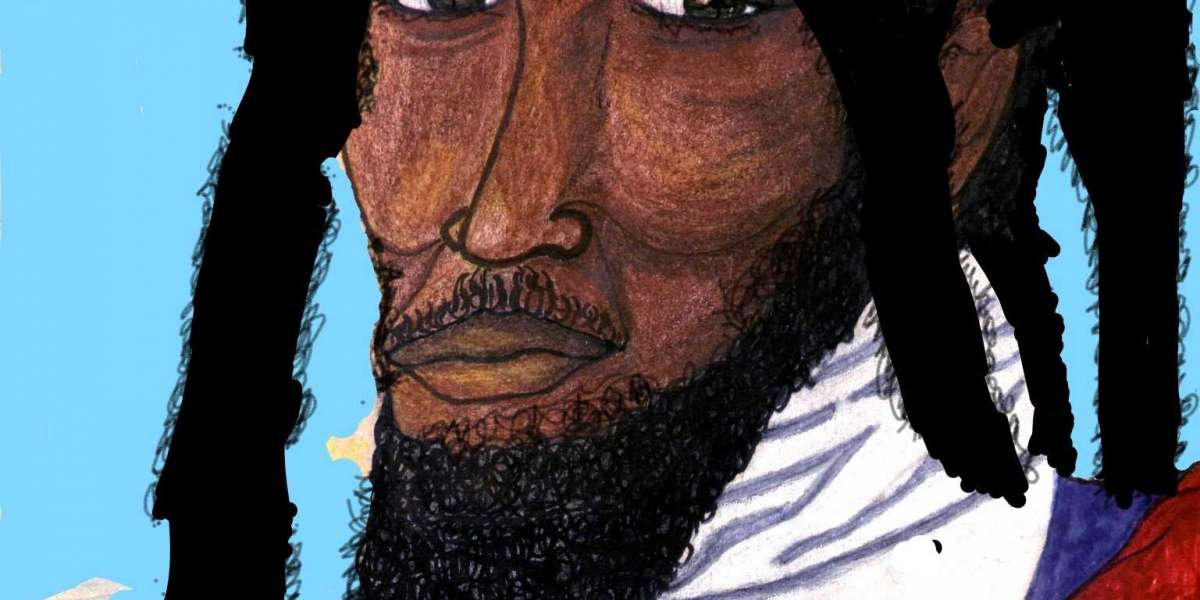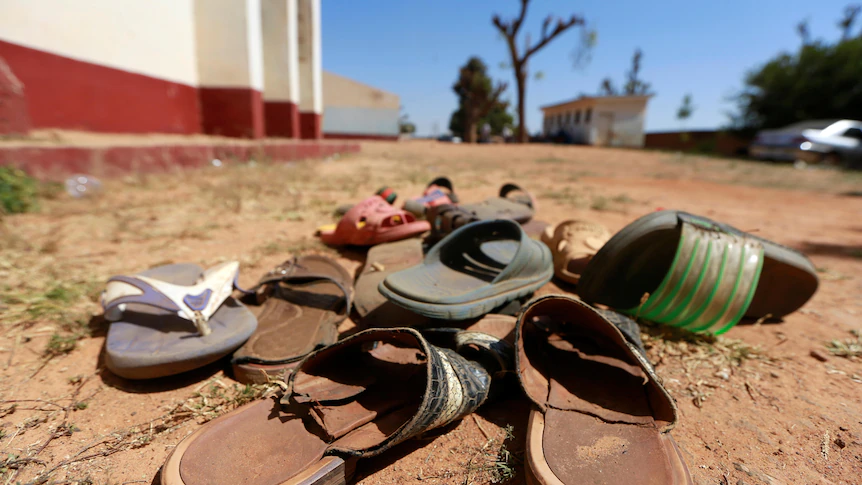Note from BBT: Brazil, Brazil. What would Brazil be without some race controversy? But then, what would you expect from a country that simultaneously has a 54% and 8% black population? If you’re new to this, you might ask how this is possible. Well, there’s plenty of data here to explain it (see here, here and here), but if you’re already with me, let’s get to this. Brazil has always been a country were millions of people, even those who are clearly black, will deny being black. A country where a huge percentage of white people have some degree of African ancestry and where we’ll never really know exactly how many of the 46% of the citizens who define themselves as pardos (browns) are actually pretos (blacks).
Due to three and half centuries of black slavery, the image of black people remains something with negative connotations in the minds of many people. It’s clear from the everyday occurrences of racism, racist jokes and comments and even popular sayings. If a black person commits an error, people say, “It had to be a black”. The ever popular, “she’s pretty for a black woman”, or, when something’s not looking good, “The thing is black”, or to define someone’s “bad hair”, the term is “cabelo ruim”. When defining someone who looks mostly white but features denoting African ancestry are apparent, he or she is said to “have a foot in kitchen”.
Thus, in a country in which race is such a huge factor but that has always denied it, who would be shocked to see people change color/racial categories if there were some sort of benefit to be gained from such a switch? It happened in Bahia’s mayoral race in 2016, and now, with a recent ruling that political campaign funding must be proportional to the percentage of black, brown and white candidates, this racial “passing” has only escalated. This is particularly true in the northeast region of the country that has a black/brown majority and is generally seen as a non-white region in the minds of people across the country.
Generally, in areas such as politics, media, modeling, banking, business management and just about any other genre we speak of, white skin generally brings benefits. It’s no secret and many white Brazilians KNOW THIS beneath the “we are all equal” rhetoric. But now that there have been some benefits established to make society more equal in terms of race such as affirmative action policies, everybody, well, a lot of people, are suddenly becoming black.
The funny thing is, if you look at some of people suddenly becoming black or brown, you can actually imagine that they have some degree of African ancestry, but they would be black only Brazil were to apply the infamous “one drop rule”, a ridiculous ideology that Brazil has always crticized the United States for adopting. But then we have clearly white folks now defining themselves as black and mixed people who are clearly not white defining themselves as such.
We’ve long seen examples of clearly non-white people defining themselves or their childen as white, but in a racially fluid society dominated by a belief in white superiority, this can be expected. But white/near white people “becoming” black? Only if there’s something to gain. What next Brazil?

24 mayoral candidates in northeastern capital cities change their race: Almost half from white to black
Fortaleza, the capital of Ceará, leads the ranking in both absolute numbers and proportionality. It is also the city with the second lowest number of black candidates. It has only more than Recife
By Bruno de Castro
The phenomenon of color/race change by candidates in this year’s elections does not only affect the competition for the city of Fortaleza, Ceará’s capital. The practice is recurrent in the Northeast, as evidenced by a survey made by the Ceará Criolo website in the records of all 105 contestants from the nine capitals of the northeast region in the Superior Electoral Court (TSE).
There are 24 candidates for mayor who changed their ethnic self-declaration – made to the TSE at the time of the registration – at least once in the last elections, be they municipal or state/federal. This represents 22.85% of the total. The capital of Ceará leads both in absolute numbers and in proportionality (see rankings below).

Mário Rogério swtiched from white, in 2016, to brown this year
Ceará Criolo consulted 364 online public candidacies for the elections between 2004 and 2020 and made available in the TSE system. There were cases of a single candidate having eight registrations. In Fortaleza alone, for example, 49 different pieces were analyzed. The documents were accessed one by one in order to cross-check the data.

João Almeida switched from white, in 2016 and 2018, to brown this year
There were 26 ethnic changes, with two candidates changing color/race more than once in recent years. The migration from white to black was the most recurrent: 12 times (or 46.15% of the total). The rectification from black to white appeared next, with nine occurrences (or 34.61% of the total). The identification from black to brown or from brown to black (within the spectrum of blackness) was found five times (or 19.23% of the total).

Bruno Reis (left and right) went from white, in 2014, to brown in 2016 and this year. He is seen with current mayor of Salvador, Bahia, ACM Neto, who declared himself brown in 2016
CAPITAL TO CAPITAL
Five candidates changed color/race in Fortaleza, which is equivalent to 45% of the total: Anizio Melo (of the PCdoB party, from black, in 2018, to brown this year), Célio Studart (of the PV, from brown, in 2016 and 2018, to white this year), Heitor Férrer (of Solidariedade, from white in 2014 and 2016, to brown in 2018 and this year), Heitor Freire (PSL, from brown, in 2016, to white this year) and José Sarto (PDT, from brown, in 2014 and 2018, to white this year).

Wallber Virgolino went from white, in 2018, to brown in 2020
In Salvador, Bahia, 33% of the candidates changed color/race. They are: Bruno Reis (DEM, from white, in 2014, to brown in 2016 and this year), Celsinho Cotrim (Pros, from brown, in 2018, to white this year) and Pastor Sergeant Isidório (Avante, from black, in 2014, to brown in 2016 and again to black in 2018 and this year).

Pastor Sergeant Isidório went from black, in 2014, to brown in 2016 and back to black in 2018 and 2020
In Teresina, the capital city of Piauí, the index was 30%, with changes in color/race by Fábio Abreu (of the PL, from black, in 2014, to brown in 2018 and again black this year), Gervásio Santos (PSTU, from brown, in 2014, to black in 2018 and this year), Lourdes Melo (PCO, from brown, in 2014, 2016 and 2018, to white this year) and Mário Rogério (Cidadania, from white, in 2016, to brown this year).
In João Pessoa, capital of Paraíba, 28% of the candidates changed color/race: Camilo Duarte (PCO, from brown, in 2014, to white this year), João Almeida (Solidariedade, from white, in 2016 and 2018, to brown this year), Rama Dantas (PSTU, from brown, in 2014 and 2016, to black in 2018 and this year) and Wallber Virgolino (Patriota, from white, in 2018, to brown in 2020).

Rama Dantas went from brown, in 2014 and 2016, to black in 2018 and 2020
In Aracaju, capital of Sergipe, 18% of the candidates migrated ethnic groups: Almeida Lima (PRTB, from white, in 2014, to brown in 2016 and this year) and Edvaldo (PDT, from white, in 2014, to brown in 2016 and this year).
The 18% index is the same as in Recife, capital of the state of Pernambuco, where candidates Mendonça Filho (DEM, from white, in 2014, to brown in 2018 and this year) and Victor Assis (PCO, from brown, in 2018, to white this year) changed color/race with the TSE.

Cícero Almeida was white in 2014, brown in 2016, white again in 2018, and brown again in 2020
The capital of Maranhão, São Luís, had 16% of the candidates changing color/race: Duarte (Republicanos, from white, in 2018, to brown this year) and Silvio Antônio (PRTB, from brown, in 2018, to white this year).
Alagoas, capital of the state of Maceió, registered a 10% change in color/race among candidates. Only Cícero Almeida (DC) rectified the registration with the Electoral Justice. He was white in 2014, turned brown in 2016, turning white again in 2018, and this year he is brown again.

Almeida Lima was white in 2014, becoming brown in 2016 and 2020
Finally, in Natal, capital of Rio Grande do Norte, which also had only one candidate this year with ethnic differences in relation to past elections: Kelps Lima (Solidaridade). In 2014 he declared himself black; changed to white in 2016; returned to black in 2018 and this year reported being black.

In 2014, Kelps Lima 2014 he declared himself black, became white in 2016, returned to black in 2018 and 2020
OFFICIAL CLASSIFICATION
We must remember that the understanding of the Brazilian Institute of Geography and Statistics (IBGE) is that the black population is composed of self-declared black and brown individuals. Although criticized by sectors of civil and old society, dating from the mid-1950s, the classification is that which is in force in the country.
This implies, therefore, that: of the 105 applications to the city halls of the northeastern capitals, only 45 are of self-declared black (black+brown) individuals. The equivalent of 42% of the total. Since no candidate reported being from another ethnic group, the remaining 58% are then white.

Victor Assis declared himself brown in 2018 but white this year
Fortaleza occupies the penultimate position in the number of black mayoral candidates. It has only three names, two being brown and one black (José Loureto, of the PCO, who entered the dispute at the spur of the moment). João Pessoa has the most blacks in the dispute, with eight candidates. Even more than Salvador, the blackest city in the world outside Africa, which has six black candidates.
Nationally, according to the TSE, 47.79% of the candidates in this year’s elections are white, 39.46% are brown, 10.46% are black, 1.54% did not provide information on skin color, 0.4% are indigenous and 0.35% are Asian. According to a Folha de Sao Paulo newspaper survey, at least 21 thousand of these postulants have changed the declaration of color in this year’s races.

Edvaldo Nogueira went from white, in 2014, to brown in 2016 and 2020
OPPORTUNISM AND REALITY
A researcher of black issues, the master in social history, professor and social scientist Hilário Ferreira evaluates the phenomenon in two ways: real self-identification and opportunism.
“It is possible that some black candidates who once considered themselves brown assumed their blackness because of the struggles of the Black Movement and became aware. However, there is an important fact that must be taken into consideration and that is linked to the opportunism of whiteness. This number of candidates who manipulate their color, if not out of ignorance, do so out of opportunism. Just take a look at the photo of some and see that they are white. They can be guided by the parties to use racial quotas to secure resources and their own candidacies.
He refers to the recent Supreme Electoral Court (TSE) decision on the equal division of electoral resources between white and black candidacies. At first, the measure would only apply to the 2022 elections, but was promulgated earlier this year, according to the president of the court, Minister Ricardo Lewandowski, to “encourage black candidacies”.

Celsinho Cotrim was brown 2018, becoming white in 2020
This new budgetary determination changes the distribution of the Partisan Fund. The color change of many candidates may mean, therefore, a strategy to access more resources within the parties and, consequently, more means to emerge victorious in the elections).
RANKING OF THOSE WHO CHANGED COLOR/RACE BY NORTHEAST PROPORTIONALITY
Fortaleza: 45% of candidates changed color/race
Salvador: 33% of candidates changed color/race
Teresina: 30% of candidates changed color/race
João Pessoa: 28% of candidates changed color/race
Aracaju: 18% of candidates changed color/race
Recife: 18% of candidates changed color/race
São Luís: 16% of candidates changed color/race
Alagoas: 10% of candidates changed color/race
Natal: 7% of candidates changed color/race
RANKING OF THOSE WHO CHANGED COLOR/RACE BY ABSOLUTE NUMBERS IN THE NORTHEAST
Fortaleza: 5 candidates changed color/race
João Pessoa: 4 candidates changed color/race
Teresina: 4 candidates changed color/race
Salvador: 3 candidates changed color/race
Aracaju: 2 candidates changed color/race
Recife: 2 candidates changed color/race
São Luís: 2 candidates changed color/race
Maceió: 1 candidate changed color/race
Natal: 1 candidate changed color/race
HOW MANY BLACK CANDIDATES EACH NORTHEASTERN CAPITAL HAS
João Pessoa: 8
Aracaju: 7
Teresina: 7
Salvador: 6
São Luís: 5
Maceió: 4
Christmas: 3
Fortaleza: 3
Recife: 2
TOTAL: 42 (of 105)
Source: Ceará Criolo















LilyoftheValley Iahpickneydem 4 yrs
Josephus wrote about the same thing they are same people from generation to generation with their lies